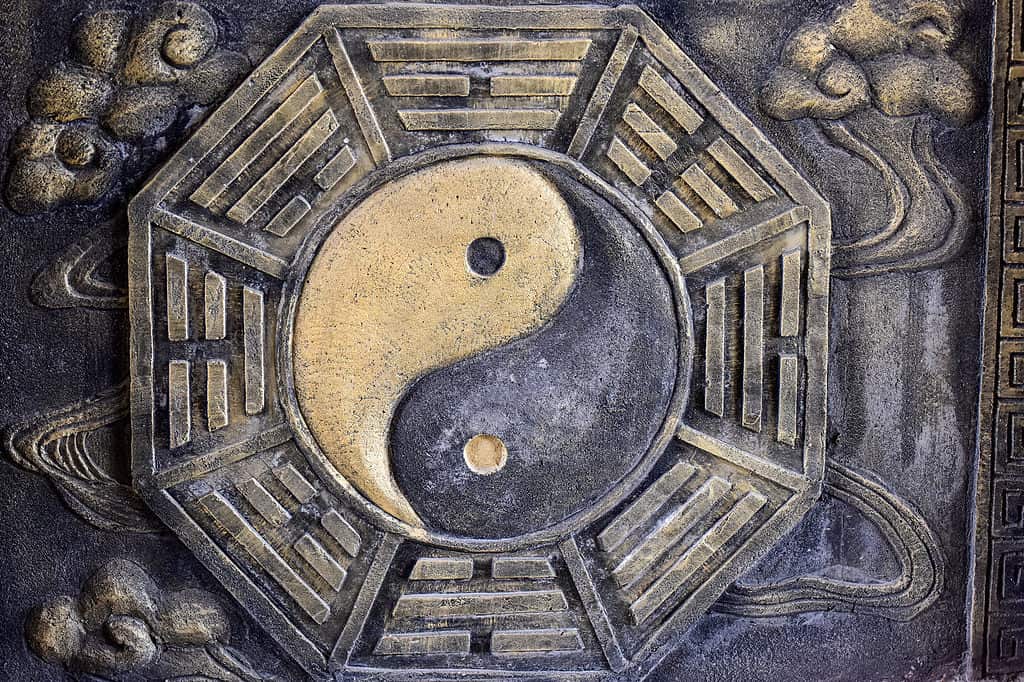Have you ever looked at a country’s flag and wondered about the specifics of the design? Like most national flags, South Korea‘s flag was created with great detail and includes references to the local culture and history, as well as meaningful symbols. Ready to learn more about the history and symbolism behind the flag of South Korea? Let’s dive in!
About the Flag of South Korea
The official name for the flag of South Korea is Taegukgi, or Taegeukgi. It is also known simply as the flag of Korea. It is a rectangular shape flag with a white background.
In each corner, you’ll find a black trigram, which is a symbol made up of three lines. The most notable and distinguishable feature on the flag of South Korea is the Taegeuk in the center. This circle contains two different swirls: a red swirl on top and a blue swirl on the bottom.
Each one of these aspects of the flag has a purpose. Every detail is a symbol that has a story, including the different colors.

The most notable and distinguishable feature on the flag of South Korea is the Taegeuk in the center.
©Rob Wilson/Shutterstock.com
Symbolism in South Korea’s Flag
Each item on the flag has a specific meaning that represents South Korea and the country’s values and ideologies. Every color, location, and shape serves a significant purpose.
First, let’s focus on the white background. Although it may seem like an empty space, the white backing is actually a very specific and intentional choice. White is a traditional color of importance in Korean culture. In the 19th century, white was a staple color of many people’s daily wardrobes. Even in more modern times, you’ll notice that many traditional garments, including the hanbok, are white. This is because white represents peace and purity.
The next important symbol is the Taegeuk in the center of the flag. We can trace the Taegeuk back to the Chinese Taiji, or Tai chi. You may also recognize this symbol in relation to the idea of yin and yang. In Chinese philosophy, the Taiji represents the “Supreme Ultimate.” It symbolizes polarity, or the opposites of everything in life, such as hot and cold or day and night.
However, the concept of yin and yang is slightly different from the Taegeuk. On South Korea’s flag, the symbol sits horizontally instead of vertically. The traditional black and white coloration is also replaced with blue and red. The red represents land, while the blue represents the sky, with the entire Taegeuk overall symbolizing balance within the world.
More symbolism in South Korea’s flag lies in the four trigrams.
Trigrams on the Flag of South Korea
Trigrams originate from the bagua or pakua of Taoist cosmology. These symbols are groups of three horizontal lines, each broken or unbroken, depending on the specific meaning. In Taiji philosophy, they’re related to the different elements of the world. They are also called the sagwe.
In the top left corner of the flag sits the symbol “☰,” or geon. This symbol is three unbroken lines. It represents heaven, spring, east, humanity, father, and justice.
In the top right is “☵,” or gam. Gam has a top broken line, a middle unbroken line, and a bottom broken line. This symbol represents the moon, winter, north, intelligence, son, water, and wisdom.
Towards the bottom left of the flag, you’ll find “☲” or ri. Ri is an unbroken line on top and bottom, with a broken line in the middle. Its meaning includes the sun, autumn, south, righteousness, daughter, fire, and fruition or growth.
Lastly, in the bottom right corner of the flag is “☷” or gon. All three lines in this trigram are broken. On the flag, as well as in its original philosophy, it represents earth, summer, west, courtesy, mother, earth, and vitality.
Together, all four of these trigrams come together to represent movement in the world and all related and interacting forces.

South Korea’s flag features trigrams, which are related to different worldly elements and represent interacting forces.
©Xiangli LI/Shutterstock.com
The History of South Korea’s Flag
Embedded with symbolism, South Korea’s flag has a deep history. Prior to 1876, Korea had no flag. However, this wasn’t an issue until the Japan–Korea Treaty of 1876 when the Joseon dynasty, the current ruling dynasty of Korea, realized they did not have a national symbol, as Japan did. This wasn’t a true concern, however, until 1880, when the need for a national flag became significant.
Negotiations continued about a potential design for the flag of Korea for several years. Citizens chose different colors and symbols. Then, on August 22, 1882, Park Yeong-hyo presented the first design featuring the Taegeuk. It became the official flag on January 27, 1883.
South Korea adopted the original Joseon Dynasty flag when it became its own country. It looked much the same, although it had been updated and redesigned slightly throughout history. The Taegeukgi became the national flag of South Korea on October 15, 1949. The country last updated it on May 30, 2011.
The photo featured at the top of this post is © Pavlo Lys/Shutterstock.com
Sources
- Museum.go, Available here: https://www.museum.go.kr/site/eng/relic/represent/view?relicId=4481
Thank you for reading! Have some feedback for us? Contact the AZ Animals editorial team.






